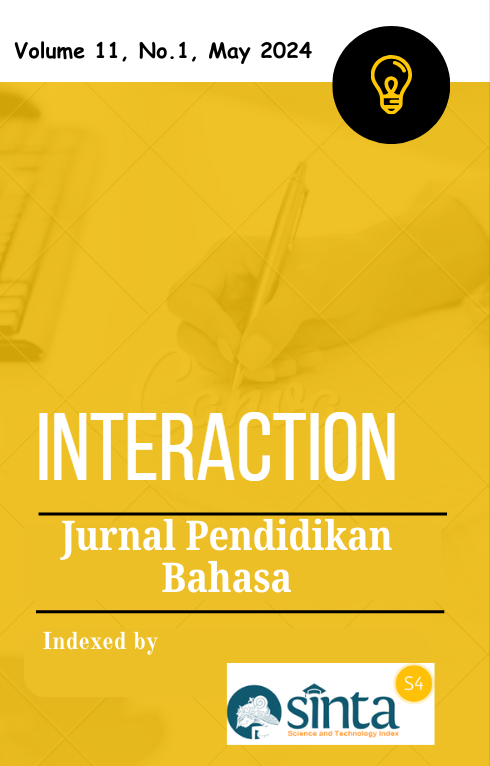Electronic Word of Mouth at Online Travel Agent Traveloka
Abstract
This research aims to analyze positive e-WOM on Online Travel Agent Traveloka and negative e-WOM on Online Travel Agent Traveloka. This research type uses qualitative research carried out on Traveloka users who are in Bandung City and have made purchases at the Traveloka online travel agent. The sources of informants in this research are the OTA Traveloka user community and OTA Traveloka admins. Data collection techniques were carried out using observation, interviews, and documentation. To find out E-WOM at Online Travel Agent (OTA) Traveloka, researchers have distributed questionnaires to 6 respondents. The researchers use dimensions and indicators to measure E-WOM. In the intensity dimension, are 3 indicators used, including the frequency of accessing Traveloka user information, the frequency of interaction between Traveloka users, and the number of reviews written by Traveloka users. Positive E-WOM is essential in building a positive brand image and increasing user trust in Traveloka. Negative E-WOM can reduce the level of user trust in Traveloka. Negative reviews signal a problem or dissatisfaction with the service or product, affecting the overall perception of the platform's credibility.
Downloads
References
Adriyati, R., & Indriani, F. (2017). The Influence of Electronic Word of Mouth on Brand Image and Purchase Interest in Wardah Cosmetic Products. Diponegoro Journal of Management, 6, 1–14.
Anwar, MI (2011). Impact Of The Word Of Mouth On Consumer's Attitude Towards The Non-Deceptive Counterfeits. Journal Of Scientific Research 9(1), pp. 51 – 56.
APJII. (2023). Indonesian Internet User Profile.
Aprillio, RG, & Wulandari, A. (2018). The Influence of Electronic Word of Mouth on Purchasing Decisions (Case study at Favehotel Hyper Square Bandung). Proceedings of Applied Science, 4(3).
Assael, H. (1995). Consumer behavior and marketing action. New York: South-Western College Publishing
Assauri, S. (2018). Marketing Management (Basics, Concepts & Strategy). Depok: PT Raja Grafindo Persada.
Chan Yew Ling (2013) Consumers' purchase intention of green products: investigating the drivers and moderating variables. Elixir Marketing Mgmt. 57A, pp. 14503-14509.
Chinco Lin, Yi-Shuang Wu, and Jeng-Chung Victor Chen. (2013). Electronic Wordof-Moutn: The Moderating Roles of Product Involvement and Brand Image. Proceedings of 2013 Conference on Technology Innovation and Industrial Management 29-31 May 2013, Phuket, Thailand.
Fakharyan, M., Jalilvand, M.R., Elyasi, M., & Mohammadi, M. (2012). The influence of online word of mouth communications on tourists' attitudes toward Islamic destinations and travel intention: Evidence from Iran. African Journal of Business Management, 6(38), 10381.
Florence, F., Ferlita, A., & Harianto, A. (2019). The Influence of Online Reviews on Purchase Intention in Budget Hotels at Online Travel Agents (OTA). Journal of Hospitality and Service Management, 7(2).
Hadjar, I. (1996). Basics of quantitative research methodology in education. Jakarta: Raja Grafindo Persada.
Hasan, A. (2013). Marketing and selected cases. Yogyakarta: CAPS (Center For Academic Publishing Services).
Hendriyati, L. (2019). The influence of online travel agents on room bookings at the Pearl Malioboro Hotel, Yogyakarta. Travel Media, 17(1).
Hennig-Thurau, T., Gwinner, K. P., Walsh, G., & Gremler, D. D. (2004). Electronic word-of-mouth via consumer-opinion platforms: what motivates consumers to articulate themselves on the Internet of interactive marketing, 18(1), 38-52.
Khaerunnisa, S., & Ramantoko, G. (2022). The Influence of Electronic Word of Mouth (eWOM) on Purchasing Decisions of Cirebon People at Tokopedia. eProceedings of Management, 9(5).
Kinnear, T. C. and Taylor, J. R. (2003). Marketing Research. (Translation by Thamrin), Edition Three. Jakarta: Erlangga.
Kotler, P. and Keller, K. L. (2016). Marketing Management 12th edition Volumes 1 & 2. Jakarta: PT. Index.
Nasehifar, V. and Es-hai, SMS (2014), Factors Affecting Consumer Attitudes and Their Impact on Purchase Intention of Leather Clothes. Nationalpark Forschung In Der Schweiz (Switzerland Research Park Journal), Vol. 103 No. 1, p. 33.
Prastuti, DI, & Karyanti, Y. (2020). The influence of electronic word of mouth on online train ticket purchasing decisions. Exacta Factors, 13(3).
Ramdhan, M. (2021). Research methods. Bandung: Cipta Media Nusantara.
Sari, N., Saputra, M., & Husein, J. (2017). Electronic word of mouth influences purchasing decisions at the Bukalapak online store. com. Darmajaya Masters Management Journal, 3(01), 96-106.
Sari, N., Saputra, M., & Husein, J. (2017). Electronic word of mouth influences purchasing decisions at the Bukalapak online store. com. Darmajaya Masters Management Journal, 3(01), 96-106.
Schiffman and Kanuk. (2015). Consumer Behavior (7th ed.). Jakarta: Prentice Hall.
Setiadi, NJ (2003). Consumer Behavior: Concepts and Implications for Marketing Strategy and Research. Jakarta: Kencana.
Sindunata, I., & Wahyudi, BA (2018). The influence of e-WOM (Electronic-word-of-mouth) on purchasing decisions on Agoda. com. Journal of Hospitality and Service Management, 6(1).
Sugiyono, (2018). Quantitative, Qualitative, and R&D Research Methods. Bandung: CV. Alphabet.
Suryani, T. (2008). Consumer Behavior: Implications for Marketing Strategy. Yogyakarta: Graha Ilmu.
Susilawati, H., & Ampta, S. (2017). The Influence of Electronic Word of Mouth on the Decision to Visit Sindu Kusuma Edupark. Equatorial Journal of Informatics, 8(2), 490029.
Tjiptono, F. (2017). Services Marketing Management. Jakarta: PT Index Gramedia Group
Zhang, J. Q., Craciun, G., & Shin, D. (2010). When does electronic word-of-mouth matter? A study of consumer product reviews. Journal of Business Research, 63(12), 1336-1341.




.png)



22.png)
